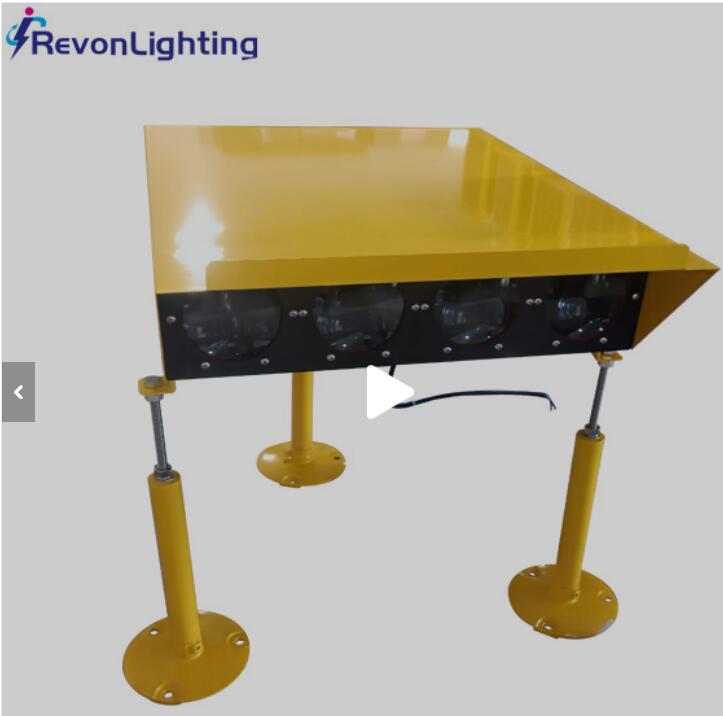PAPI Lights: Guiding Aircraft to Safe Landings
Precision Approach Path Indicator PAPI lights are a crucial part of modern aviation, providing pilots with vital information about their approach angle to the runway. These lights are instrumental in ensuring safe landings, particularly in challenging weather conditions or at unfamiliar airports. This article explores the history, design, functionality, applications, and future advancements of PAPI lights, highlighting their indispensable role in aviation safety.
History and Development of PAPI Lights
The concept of visual approach slope indicators has been evolving since the early days of aviation. Initially, simple systems like the Visual Approach Slope Indicator (VASI) were used to help pilots maintain the correct glide path during their approach to the runway. However, VASI systems had limitations in terms of visibility range and accuracy.
In the 1970s, the PAPI system was developed to address these shortcomings. PAPI lights provide a more precise visual guide to pilots, allowing them to make safer and more accurate approaches. The system quickly gained acceptance and became a standard feature at airports around the world.
Design and Functionality of PAPI Light
PAPI lights are typically installed on the left side of the runway and consist of a row of four light boxes positioned perpendicular to the runway centerline. Each light box contains a high-intensity light that emits either a white or red beam, depending on the angle of approach.
Key Components of PAPI Lights
Light Boxes: Each PAPI light box contains a high-intensity light source and a set of lenses or filters that create distinct red and white beams. The lights are positioned to provide specific visual cues to pilots based on their approach angle.
Calibration: The light boxes are carefully calibrated and aligned to ensure that the transition between the red and white lights occurs at precise angles. This calibration is critical for providing accurate guidance to pilots.
Power Supply: PAPI lights are connected to a reliable power source, often with backup systems in place to ensure continuous operation even during power outages.
Control Systems: Modern PAPI systems are equipped with control units that allow for adjustments in light intensity and other settings, ensuring optimal visibility under various weather conditions.

How PAPI Lights Work
PAPI lights operate on a simple principle: they provide visual cues to pilots about their approach angle. The system is designed to show a combination of red and white lights, indicating whether the aircraft is above, on, or below the optimal glide path.
Two White and Two Red Lights: This combination indicates that the aircraft is on the correct glide path, providing a clear signal to continue the approach.
Four White Lights: Seeing all white lights means the aircraft is too high on the approach. The pilot needs to descend to reach the optimal glide path.
Four Red Lights: All red lights indicate that the aircraft is too low on the approach, and the pilot must climb to avoid potential hazards.
Three White and One Red Light: Slightly high on the approach, the pilot should make a slight descent adjustment.
One White and Three Red Lights: Slightly low on the approach, the pilot should make a slight climb adjustment.
Applications of PAPI Lights
PAPI lights are used in a variety of aviation settings, each crucial for ensuring safe and efficient landings.
Commercial Airports: Major airports worldwide rely on PAPI lights to guide commercial aircraft during landing approaches. The system enhances safety by providing clear visual cues to pilots, especially in poor visibility conditions.
Military Airfields: Military airfields use PAPI lights to ensure precise and safe landings for military aircraft, which often operate in challenging environments and under stringent safety protocols.
General Aviation: Smaller airports and airstrips catering to general aviation also use PAPI lights to assist pilots of light aircraft. These lights are particularly valuable for less experienced pilots or those unfamiliar with the airport.
Remote and Emergency Airstrips: In remote locations or emergency airstrips, PAPI lights provide essential guidance for aircraft landing in difficult or unprepared environments.
| papi light | papi lights |
| 23 | 12 |
Technological Advancements and Future Prospects
The future of PAPI lights is likely to see continued advancements and integration with other technologies to enhance their effectiveness and reliability.
LED Technology: The adoption of LED lights in PAPI systems is becoming more common. LEDs offer numerous benefits, including longer lifespan, lower energy consumption, and improved visibility. They also provide more consistent light output, reducing the need for frequent maintenance.
Solar-Powered Systems: Solar-powered PAPI lights are an emerging trend, particularly for remote and off-grid locations. These systems harness solar energy to power the lights, reducing reliance on external power sources and enhancing sustainability.
Integration with Instrument Landing Systems (ILS): Future PAPI systems may be more closely integrated with ILS and other navigation aids, providing pilots with comprehensive guidance that combines visual and instrument-based information.
Smart Control Systems: The development of smart control systems for PAPI lights can allow for real-time adjustments based on weather conditions, traffic volume, and other factors. This can optimize the performance of PAPI lights, ensuring they provide the best possible guidance under varying circumstances.
Enhanced Durability and Weather Resistance: Advances in materials and engineering can improve the durability and weather resistance of PAPI lights, ensuring reliable operation in extreme conditions.
Conclusion
PAPI lights are a fundamental component of modern aviation safety, providing pilots with crucial information about their approach angle to the runway. These lights enhance the accuracy and safety of landings, particularly in challenging conditions. With ongoing technological advancements, PAPI lights are set to become even more effective and reliable, continuing to play a vital role in guiding aircraft to safe landings around the world. As aviation technology progresses, the integration of LED lighting, solar power, smart control systems, and other innovations will further enhance the performance and sustainability of PAPI lights, ensuring they remain an indispensable tool for aviation safety.
